It sounds like something too far-fetched even for Grey's Anatomy: In the middle of a cross-country flight, a passenger suddenly convulses in pain. Responding to the pilot's urgent call over the intercom, a doctor on the plane pulls out his smartphone, attaches a heart monitor and makes an instant diagnosis: It's a heart attack.
Based on the doctor's recommendation, the plane makes an emergency landing and the patient is rushed to a nearby hospital. He survives.
That real-life incident, featured this year on NBC News' Rock Center, offers a glimpse of the potential for medical apps. We have already grown accustomed to hearing that there's an app for everything, but advances in mobile technology are about to radically transform health care.
The incident on the plane is only half the story. A smartphone connected to a medical device can allow you to monitor your health outside the doctor's office -- and that's amazing. But what makes medical apps truly revolutionary is that they use internet-enabled smartphones and tablets to connect us directly to our family physicians and medical professionals. Patients can now measure their blood pressure, glucose levels, and other vital statistics at home and transmit them daily to their physician.
Receiving these diagnostic measurements remotely, a doctor can track conditions that require frequent monitoring like hypertension, diabetes, and sleep apnea. It is also valuable for patients that need extra attention such recent stroke victims or those who suffer from neurological diseases such as multiple sclerosis, Parkinson's, or dementia. Mobile health apps can also connect physicians with those in underserved communities, remote areas, or with limited mobility for whom office visits are difficult and occur infrequently. With more diagnostic data, doctors can spot the early signs of adverse conditions and take preventive measures to improve health outcomes.
Recognizing these opportunities, the President launched the White House Health Design Challenge, a competition held to challenge designers to reimage healthcare records. The winner, a mobile and desktop product called Nightingale, takes complex patient data (medical history, allergies, current medications, immunizations) and displays this vital information in an intuitive, easy-to-digest format. The Department of Veterans Affairs has already committed to use this app to assist in the treatment of its 6 million patients.
Advances like these, making health care information more accessible to patients, are possible because of the remarkable growth of the smartphone. No technology has ever been so rapidly adopted. Not the car, computer, electricity, microwave, or the internet. In less than a decade, more than half of U.S. mobile phone users have adopted smartphones -- they now carry a powerful computing device in their pocket or purse that has constant internet connectivity.
With over a million apps created to use this as a vehicle for wireless broadband, internet usage has exploded. Mobile data traffic rose by 70 percent in 2012 and is expected to grow to eleven times today's level within four years. Americans are now communicating in entirely different ways than we did just a decade ago, and our nation's resources are strained trying to meet the massive demand of merged voice and data traffic.
Fortunately, innovation and investment in the future of our telecommunications infrastructure has been very active during this period of growth. What has emerged as the next generation solution is an internet-protocol (IP)-based infrastructure that treats all communication as data.
The IP-based network greatly improves performance by more efficiently managing traffic for existing services while providing scalability to meet the demands of future growth. Internet protocol networks can be modified, offering the flexibility needed to adapt to innovation and new technologies. Functions and features can be added without the need for new infrastructure.
As the results of the White House initiative demonstrate, mobile health care and telemedicine are still in their relative infancy. But its potential to dramatically improve health outcomes is clear -- just ask the stroke victim on the plane. What will be critically important for these services to succeed on a large scale -- improving patient care and physician resources -- is a stable, reliable communications infrastructure. To ensure this happens, and to accommodate the massive growth in voice and data traffic projected far into the future, it is essential we make the transition from legacy voice-centric networks to those that are internet protocol-based.
The only thing that could stand in the way of making these crucial updates is Washington. Laws written in the 1930s establishing the regulation of communications services have been suggested as a guide for IP-based networks. Unfortunately, these are ill-suited for today's data networks that transmit voice, video, email, and health information every day.
While our telecommunications services have evolved, our nation's regulatory system has not. Internet protocol is an entirely different mode of transmission than the drafters of the 1930s legislation envisioned. Embracing this new technology will be critical to ensure our communications infrastructure is capable of handling the growth that emerging technologies require. We've already seen a medical app save one life. Ensuring a stable network to allow mass adoption of these services would have a profound impact on many more.
Morgan Reed is Executive Director of the mobile app organization ACT 4 Apps, and is an Advisory Council member of mHIMSS, the leading organization representing the mobile health IT industry.